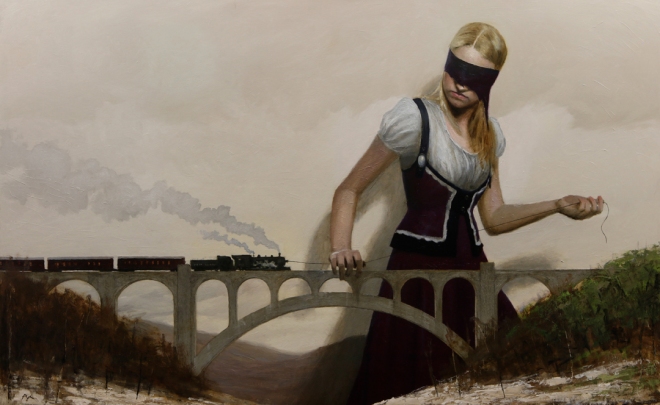Happy Tuesday! You may remember that not long ago we spent some time looking at the well-known movement called Surrealism. We’re going to be looking at a lesser-known “relative” of that movement today: Magical Realism.
What is it?
Magical Realism is a term that has been long-debated and is typically more frequently applied to literary rather than visual arts. Although glimpes of Magical Realism were seen in the art world prior to the invention of the term, it was first used by art critic Franz Roh in the late 1920’s to describe the changes that he was observing in art in the wake of Expressionism. The dawn of the 20th century, the upheaval of wars, the advancement of technology, and the changing world converged to produce several art movements that drifted further and further from strict Realism and into the realms of abstraction– for example, Expressionism, Dada, Cubism, Fauvism, Futurism, and more. The changes noted by Franz Roh, however, indicated that some artists were “reverting” to Realism again, though with an eerie, mysterious twist. While Surrealism focused on heavily psychological subjects (dreams, the subconscious, etc.), Magical Realism showed a mostly-recognizable reality, but in a way that added a sense of mystery, unease, or magic to that reality. Unlike Surrealism’s jarring juxtapositions and unsettling, even shocking, imaginary concepts, Magical Realism presented a mostly-believable world, with just a hint of mystery. Often, Magical Realism paintings included a sense of stillness, gravity, and heightened sharpness or detail, while also incorporating fantastical elements. Let’s take a look at some examples.
Examples from art history:
First, let me clarify that as many artists crossed back and forth between genres, Magical Realism has become a bit ambiguous in the eyes of some art historians. Many of the artworks of the early 20th century contained elements that could include them in multiple art movements. Here are several examples of artworks that many art historians classify as Magical Realism. Do you agree?

Examples at Principle Gallery:
We’ve got a fantastic figurative exhibition coming up this February entitled “Bodies of Work,” and we’re thrilled about the variety of work in the show, including the many pieces with elements of Magical Realism! Take a look at some of these sneak peeks from the exhibition, and see if you think you’d qualify them as Magical Realism, Surrealism, or something else altogether! Be sure to shoot us an email at info@principlegallery.com to request a digital preview of the show as soon as it’s available, if you’d like to be among the first to see this beautiful collection of artworks!







Interesting. I never saw “Spring” before. Clever